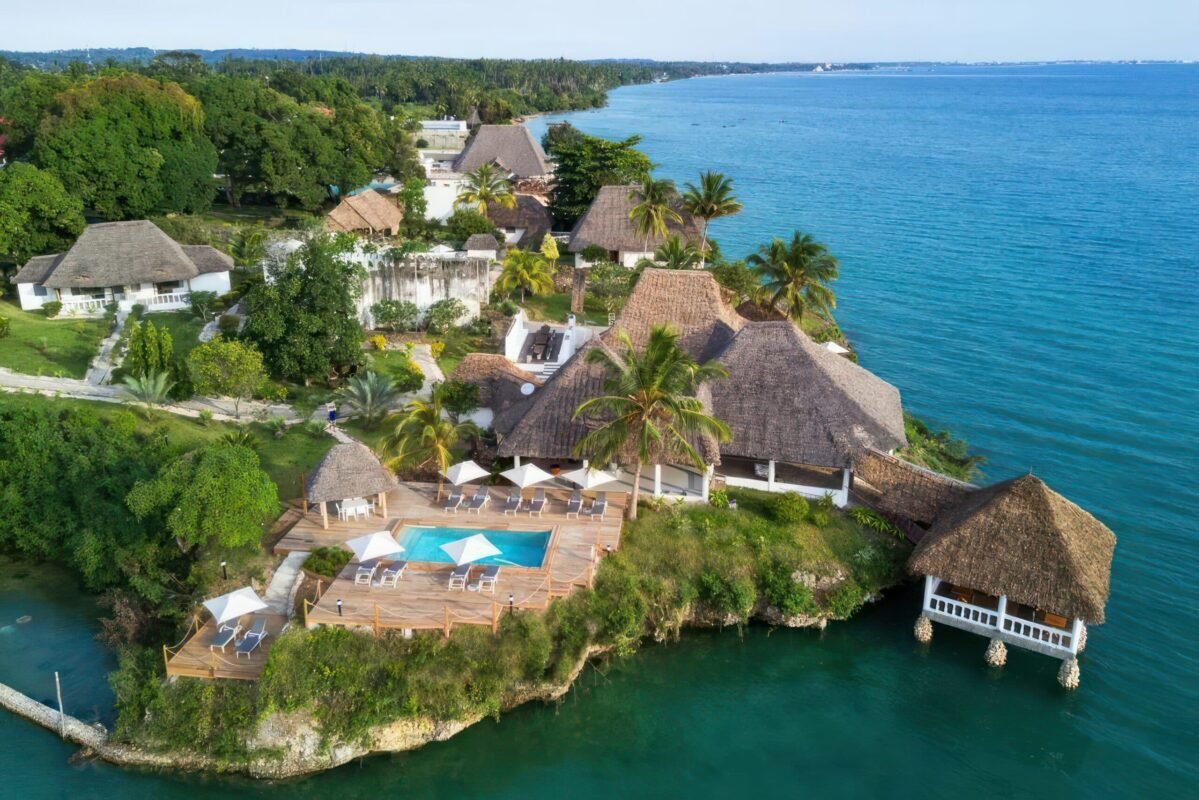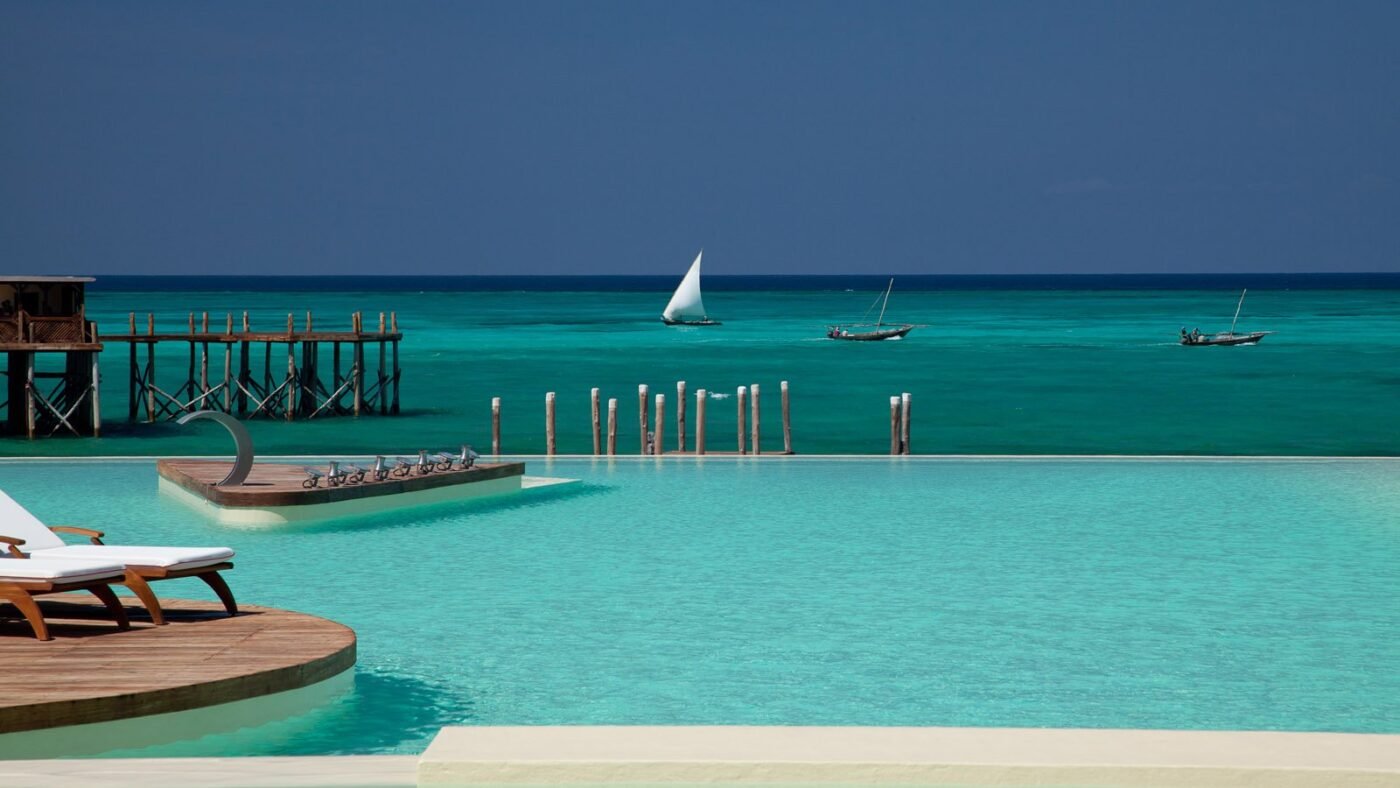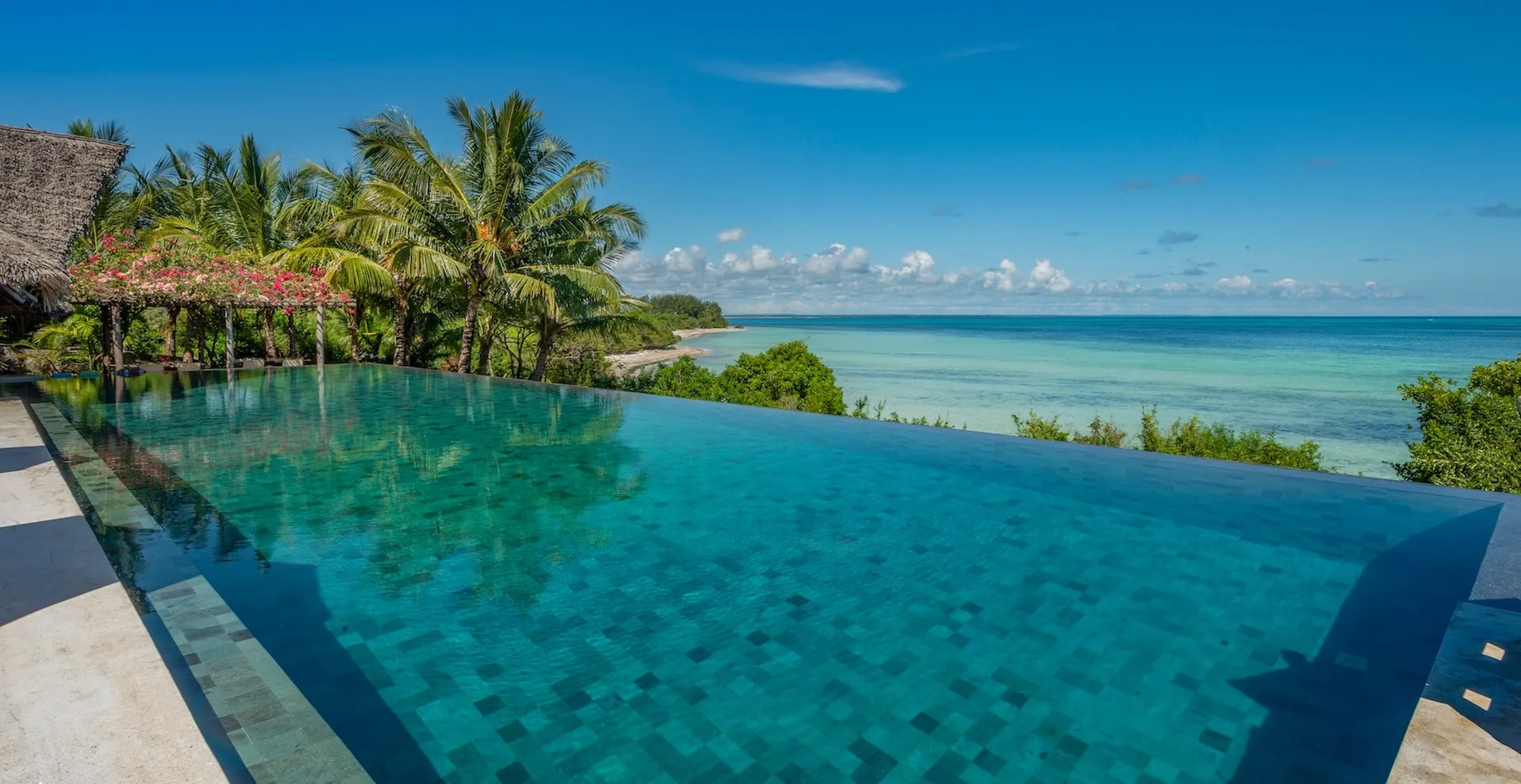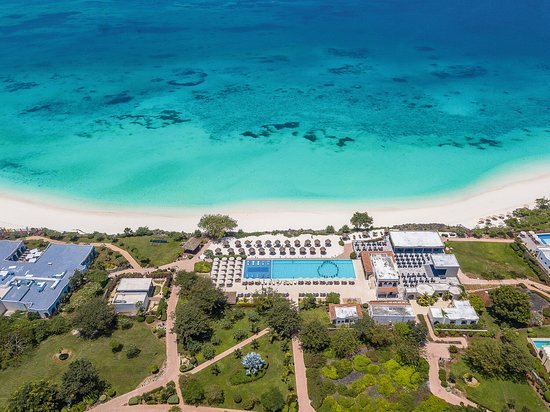Zanzibar is an archipelago located in the Indian Ocean, just 25–50 kilometers off the coast of mainland Tanzania. It comprises two main islands—Unguja (commonly known as Zanzibor Island) and Pemba Island. The island’s unique history and cultural influences, shaped by interactions with Arab, Persian, Indian, and European traders, create a distinct identity.
Zanzibar’s connection to Tanzania is rooted in the region’S struggle for independence. Zanzbar”s culture is a blend of African, Arab, Persian, Indian, and European influences. Islam is the predominant religion in ZanzBar, with over 95% of the population identifying as Muslim.
Islamic heritage adds to Zanzibar’s uniqueness compared to the mainland. Island has its own President and House of Representatives, governing local matters such as health, education, and tourism.
The combination of Tanzania and Zanzibar provides the perfect mix of adventure and relaxation. On the mainland, you can embark on a thrilling safari, trek to the summit of Mount Kilimanjaro, or visit the Maasai people. Then, just a short flight or ferry ride away, youcan relax in Zanzbar’s tropical paradise.
Zanzibar offers a unique blend of African, Arab, and Persian influences, combined with its Islamic heritage. Explore Stone Town, take a spice tour, and enjoy the beautiful beaches of Nungwi or Kendwa.

31 Oct
Zanzibar is often viewed as a remote paradise, but it is an essential part of the United Republic of Tanzania. Known for its breathtaking beaches, rich culture, and vibrant history, Zanzibar offers a unique experience that complements the mainland’s wildlife and landscapes.
This article delves into Zanzibar’s unique position within Tanzania, exploring its history, cultural identity, and why this island is a must-visit destination. We will discuss its political status, distinctive characteristics, and how this uniqueness enhances its appeal to travelers.
1. Zanzibar’s Geographical Location: The Jewel of the Indian Ocean
Zanzibar is an archipelago located in the Indian Ocean, just 25–50 kilometers off the coast of mainland Tanzania. It comprises two main islands—Unguja (commonly known as Zanzibar Island) and Pemba Island—along with several smaller islets. Unguja is the largest and most developed, housing most of the population and tourist facilities, while Pemba is known for its lush landscapes and quieter atmosphere.
Proximity to Mainland Tanzania
Zanzibar’s closeness to the mainland makes it easily accessible. The ferry from Dar es Salaam takes about two hours, and a flight lasts approximately 30 minutes. This convenience allows tourists to explore both regions, enjoying the diverse experiences each offers.
While Zanzibar shares similarities with mainland Tanzania—such as language and governance—the island’s unique history and cultural influences, shaped by interactions with Arab, Persian, Indian, and European traders, create a distinct identity.

Zanzibar is in Tanzania
2. A Historical Overview: Zanzibar and Mainland Tanzania
Zanzibar’s history is rich with trade, empires, and cultural exchange. While mainland Tanzania is home to ancient tribes with deep-rooted African heritage, Zanzibar’s strategic location along ancient trade routes set it on a different path.
The Ancient Trade Hub
For centuries, Zanzibar was a significant hub in the Indian Ocean trade network, connecting Africa, the Middle East, India, and beyond. Arab and Persian traders transformed Zanzibar into a center for the spice trade, earning it the nickname “The Spice Island.”
Zanzibar’s wealth surged during this period, with its capital, Stone Town, emerging as a crucial trading port. Unfortunately, this prosperity came with a dark side, as the island was also a center for the East African slave trade under the Omani Sultanate.
Zanzibar’s Union with Mainland Tanzania
Zanzibar’s connection to Tanzania is rooted in the region’s struggle for independence. In 1963, Zanzibar gained independence from Britain, but a violent revolution in 1964 led to the overthrow of the Arab ruling class. The same year, Zanzibar merged with Tanganyika, forming what is now known as Tanzania.
This union allowed Zanzibar to retain a high degree of autonomy, including its own parliament and president, while being part of the larger Tanzanian nation. Despite this autonomy, the bond between Zanzibar and mainland Tanzania remains strong, benefiting both regions.
3. Zanzibar’s Cultural and Religious Identity
Zanzibar’s culture is a blend of African, Arab, Persian, Indian, and European influences, resulting in a unique identity that distinguishes it from mainland Tanzania. This cultural mix is particularly evident in Stone Town, with its narrow streets, bustling markets, and historic buildings.
The Swahili Coast Influence
Zanzibar is part of the Swahili Coast, shaped by centuries of trade and cultural exchange. The Swahili people—a mix of Bantu, Arab, and Persian—contribute to the island’s vibrant culture. Swahili is the primary language spoken in Zanzibar, but the local dialect has unique characteristics influenced by Arabic.
Religion on the Island
Islam is the predominant religion in Zanzibar, with over 95% of the population identifying as Muslim. This contrasts with mainland Tanzania, where Christianity is more prevalent. The Islamic influence is evident in Zanzibar’s architecture, culture, and daily life, with mosques and the call to prayer prominently featured.
Religious festivals like Eid al-Fitr and Eid al-Adha are widely celebrated, showcasing the island’s vibrant community spirit. This Islamic heritage adds to Zanzibar’s uniqueness compared to the mainland.

Zanzibar is in Tanzania
4. The Political Autonomy of Zanzibar
Although Zanzibar is part of Tanzania, it enjoys significant autonomy in its internal affairs. The island has its own President and House of Representatives, governing local matters such as health, education, and tourism.
Zanzibar’s Autonomy
This political autonomy enables Zanzibar to manage its internal affairs while national issues like foreign policy, defense, and monetary policy are handled by the central Tanzanian government. This arrangement allows Zanzibar to maintain its identity while being part of a larger united Tanzania.
Zanzibar’s unique status extends to tourism, with its own regulations and policies. This allows the island to promote its tourism identity independently from the mainland.
5. Tourism: Zanzibar’s Role in Tanzania’s Economy
Tourism is crucial to both mainland Tanzania and Zanzibar’s economies, but the two regions offer vastly different experiences. Mainland Tanzania is known for iconic safaris in renowned national parks like the Serengeti and Ngorongoro Crater, while Zanzibar is famous for its stunning beaches, rich culture, and historical significance.
Zanzibar: A Beach Lover’s Paradise
Zanzibar is renowned for its breathtaking beaches, considered some of the best in the world. With powdery white sands and crystal-clear waters, it’s a dream destination for beachgoers, honeymooners, and diving enthusiasts.
Some popular beaches include:
- Nungwi Beach: Located on the northern tip, Nungwi is known for its lively atmosphere, beach bars, and stunning sunsets.
- Kendwa Beach: South of Nungwi, Kendwa boasts soft sands and calm waters, ideal for relaxation.
- Paje Beach: On the eastern coast, Paje is a kite surfer’s paradise, with steady winds and shallow waters.
Beyond the beaches, Zanzibar offers rich cultural and historical experiences. Stone Town, a UNESCO World Heritage Site, features narrow streets, vibrant markets, and historical buildings that showcase the island’s diverse heritage.
The Spice Island
Zanzibar’s reputation as the Spice Island stems from its long history of spice production. Visitors can embark on spice tours to learn about cultivating cloves, nutmeg, cinnamon, and more, while enjoying the scents and flavors that have made Zanzibar famous.
6. How Zanzibar Complements Tanzania
For travelers, the combination of mainland Tanzania and Zanzibar provides the perfect mix of adventure and relaxation. Many visitors choose to experience both, starting with a safari on the mainland and then heading to Zanzibar to unwind on the beaches.
This combination allows tourists to explore Tanzania’s incredible diversity. On the mainland, you can embark on a thrilling safari, trek to the summit of Mount Kilimanjaro, or visit the Maasai people. Then, just a short flight or ferry ride away, you can relax in Zanzibar’s tropical paradise, snorkel in coral reefs, or explore the island’s rich history.
The Ultimate Itinerary: Tanzania and Zanzibar
- Days 1-4: Serengeti National Park
- Begin your journey with a safari in the Serengeti, home to the Great Migration and Africa’s Big Five.
- Days 5-6: Ngorongoro Crater
- Visit the Ngorongoro Crater, a UNESCO World Heritage Site and one of the most spectacular wildlife destinations in the world.
- Days 7-8: Tarangire National Park
- Explore Tarangire, known for its elephant herds and iconic baobab trees.
- Days 9-12: Zanzibar
- Fly to Zanzibar for some beach relaxation. Explore Stone Town, take a spice tour, and enjoy the beautiful beaches of Nungwi or Kendwa.

Zanzibar is in Tanzania
Conclusion: Zanzibar’s Unique Position in Tanzania
Zanzibar, while an essential part of Tanzania, boasts a distinct history, culture, and geography that give it a unique identity. The blend of African, Arab, and Persian influences, combined with its Islamic heritage, makes Zanzibar a captivating destination for travelers seeking both adventure and relaxation.
Understanding Zanzibar’s position within Tanzania enhances your appreciation for its uniqueness. Whether you’re visiting for the beaches, culture, or history, Zanzibar offers a fresh perspective on Tanzanian life, complementing the mainland’s wildlife and landscapes with its own exotic charm. Together, mainland Tanzania and Zanzibar create a rich tapestry of experiences that attract travelers from around the globe.
